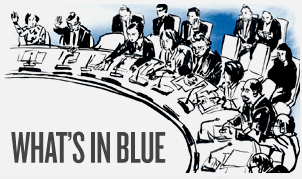Myanmar: Vote on Draft Resolution*
This afternoon (21 December), the Security Council is expected to vote on a draft resolution on Myanmar, which was proposed by the UK (the penholder on the file). The draft resolution in blue demands an immediate end to all forms of violence and urges restraint and de-escalation of tensions. It also calls for the release of all prisoners and expresses concern about violence across Myanmar, attacks against civilians and civilian infrastructure, and human rights abuses and violations. In addition, it requests a briefing from the Secretary-General or from his Special Envoy on the implementation of the Association of Southeast Asian Nations (ASEAN) Five-Point Consensus of April 2021—which called for an immediate cessation of violence and constructive dialogue among all parties, among other things—by 15 March.
Although Myanmar has been on the Security Council’s agenda since 2006, the Council has tended only to focus on the file following events that spark a marked deterioration in the security and human rights situation. In 2017, the exodus of over 700,000 Rohingya refugees to Bangladesh brought the situation to the Council’s attention after several years of occasional briefings. In this regard, the draft in blue emphasises the need to address the root causes of the crisis in Rakhine State and to create the conditions for the return of the Rohingya refugees and internally displaced persons.
Since February 2021, the military takeover, which precipitated increased levels of violence and unrest, has been a catalyst for greater Council activity on this issue. The Council has adopted one presidential statement (S/PRST/2021/5) and Council members have issued six press statements on the matter since then. If adopted, this will be the first Security Council resolution on the situation in Myanmar. In 2007, the Council failed to adopt a draft resolution on Myanmar due to vetoes cast by China and Russia. In December 2018, the UK made another attempt following the Rohingya crisis, but China and Russia did not engage on the resolution, and the penholder decided not to table the draft for a vote.
There has been a growing interest among some Council members in a stronger outcome on the situation in Myanmar. These members, together with the UK, began discussing the possibility of a draft resolution in mid-2022. A zero draft was circulated to all Council members in September. However, discussion on the draft was slowed down by some members’ insistence on obtaining ASEAN’s agreement on having a resolution before proceeding with the negotiations. It was further delayed by the desire of some members, including the A3 (Gabon, Ghana, and Kenya), to wait until after the ASEAN summit in November. These members stressed the importance of reflecting the views of the regional organisation. While ASEAN has not opposed the resolution, some of its members may be less comfortable with it.
Council dynamics on Myanmar remain challenging. While China has often taken the lead in opposing strong action on Myanmar in the Council, it seems that in negotiations on Council products since the military takeover, Russia has been as resistant, if not more so. India has also expressed strong views about allowing space for the region to address the situation in Myanmar. The UK, which has for the last few years also advocated allowing ASEAN to lead on this issue, now appears to be more inclined to promote a more active role for the Council. Several other members have worked closely with the UK in trying to get more traction on this issue in the Council. The draft resolution in blue reflects the compromises that apparently were needed to enable agreement on a resolution on this contentious file. Some areas where language was either amended or eliminated include human rights violations against specific groups, rule of law and accountability, and women and children. It seems that some members, including China, were not inclined to go beyond the content of the presidential statement and press statements adopted over the last two years, which have also stopped short of condemning the military takeover.
Language was also strengthened in the course of the negotiations. The draft text stresses the role of ASEAN in facilitating a peaceful process and welcoming the ASEAN leaders’ review and decision on the implementation of the Five-Point Consensus. (The Five-Point consensus, which ASEAN leaders adopted in April 2021, with the agreement of General Min Aung Hlaing, called for a cessation of violence, dialogue between the parties, the appointment of a special envoy of the ASEAN Chair to facilitate mediation of the dialogue process, a visit by the ASEAN Special Envoy to Myanmar, and the provision of humanitarian aid by ASEAN.) With four of the priorities in the Five-Point Consensus unmet or partially met, during their 11 November summit, ASEAN leaders tasked their foreign ministers to develop an implementation plan that outlines concrete, practical and measurable indicators to support the implementation of the Five-Point Consensus.
There were a number of contentious issues during the Council negotiations. The initial draft text apparently included language on the Council’s determination to consider all measures at its disposal, including those under Chapter VII of the UN Charter, should the Myanmar military authorities fail to act consistently with the resolution. However, several members—including China, Brazil, India, and Russia—opposed this language. Subsequent iterations of the text omitted the Chapter VII reference but kept the mention of measures at the Council’s disposal. It appears that this did not satisfy some members; as a result, the draft in blue does not contain any references to further measures.
Another point of contention was language related to reporting by the Secretary-General. The initial draft resolution requested the Secretary-General to report on developments in Myanmar every 60 days, which would for the first time have established a regular reporting cycle on this issue. It seems that this provision was opposed by several members, including China. As a result, the draft resolution in blue requests that “the Secretary-General or through his Special Envoy, in coordination with the ASEAN Special Envoy, reports orally by 15 March 2023 to the Security Council on UN support on implementation of the Five-Point Consensus”. This language involves ASEAN in the reporting process and appears to limit the report to support to the implementation of ASEAN’s Five-Point Consensus. It seems that this change to the reporting requirement was necessary in order to appease members such as China and Russia. Other members, however, are apparently disappointed with the much weaker language on reporting and may raise this in their explanations of vote today. Although some of the women, peace and security language that was removed was reinstated in the final draft, members such as Ireland and Norway may express their disappointment at the overall weaker language on women and children in the draft in blue.
The initial draft text apparently made a number of direct requests to the Myanmar military authorities, including calling on them to exercise restraint, respect human rights and international law, end grave violations against children, and respect the will and the democratic aspirations of the people of Myanmar. The draft in blue retains language calling on the military to “immediately release all arbitrarily detained prisoners”, but most of the other requests are couched in more general language that does not clearly attribute blame. It also calls on all parties, rather than just the military, to respect “human rights, fundamental freedoms and rule of law”, and to work with the ASEAN Special Envoy and the UN. It seems that India was keen to ensure that not just the military, but also other parties involved in the conflict, were included in the draft text.
Several members—including China, India, and Russia—apparently voiced a strong preference for a presidential statement rather than a resolution. However, they were willing to engage on the draft and provided amendments, many of which were accepted. These members may nonetheless choose to abstain rather than vote in favour of the draft resolution. It seems that some members who wanted a stronger outcome, including the European members and the US, are disappointed at some of the concessions that have been made but still see a resolution as a strong signal from the Council that it is watching this issue closely.
______________________________________________________________________
*Post-script: On 21 December, the Security Council adopted resolution 2669 on Myanmar, which demands an immediate end to all forms of violence and urges restraint and de-escalation of tensions. Twelve members voted in favour of the resolution and three abstained (China, India and Russia).

